float
Or if you want to go old-school:
real
You can also use float(53), but it means the same thing as float.
("real" is equivalent to float(24), not float/float(53).)
The decimal(x,y) SQL Server type is for when you want exact decimal numbers rather than floating point (which can be approximations). This is in contrast to the C# "decimal" data type, which is more like a 128-bit floating point number.
MSSQL's float type is equivalent to the 64-bit double type in .NET. (My original answer from 2011 said there could be a slight difference in mantissa, but I've tested this in 2020 and they appear to be 100% compatible in their binary representation of both very small and very large numbers -- see https://dotnetfiddle.net/wLX5Ox for my test).
To make things more confusing, a "float" in C# is only 32-bit, so it would be more equivalent in SQL to the real/float(24) type in MSSQL than float/float(53).
In your specific use case...
All you need is 5 places after the decimal point to represent latitude and longitude within about one-meter precision, and you only need up to three digits before the decimal point for the degrees. Float(24) or decimal(8,5) will best fit your needs in MSSQL, and using float in C# is good enough, you don't need double. In fact, your users will probably thank you for rounding to 5 decimal places rather than having a bunch of insignificant digits coming along for the ride.
